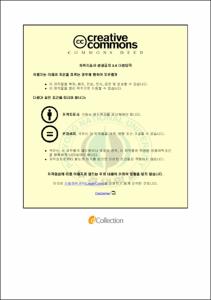발광다이오드의 색상 변화에 따른 미세조류의 성장 특성
- Abstract
- microalage is a useful resource which has Recently been attracting attention all over the world as its ability not only to fix carbon dioxide with photosynthesis but also to commercially produce useful secondary metabolites.
Most of all, it has two advantages; first, the possibility of mass production; second, the high content of lipids which is the target product of the components.
In order to cultivate these microalgae effectively, it is essential to supply efficient light, most of all
Light emitting diode also has three advantages; first it can be selectively irradiated with color; second, it doesn't generate heat; last, it has more economical than fluorescent lamp, a conventional light sources.
Although the study to apply a light emitting diode to microalgae culture has been attempted recently, more research results are needed to be applied commercially.
In this study, the optimal light color was derived with using a light emitting diode to enhance the photosynthesis of the microalgae.
Microalgae used in this study was cultured in a cultivation tank after sampling from the P University fish farm.
Medium was used as a Jaworski's medium. The number of dominant species in the culture is three: Chlorella sp, Scenedesmus and Ulothrix.
The amount of photosynthesis of microalgae was measured with the concentration of dissolved oxygen.
The optimal color ratio of the findings microalgae photosynthesis is the color ratio of light(Red : Blue = 63% : 37%) in the same amount of color strength, and The optimal color ratio of the findings microalgae photosynthesis is the color ratio of light(Red : Blue = 63% : 37%) in the same amount of light intensity.
When you examine the optimal color ratio that was discovered by using a light-emitting diode,
62.9% power is maximum as compared to when it was irradiated the cause fluorescent lamp (Watt) low.
- Issued Date
- 2015
- Awarded Date
- 2015. 2
- Type
- Dissertation
- Publisher
- 부경대학교
- Affiliation
- 지구환경시스템과학부
- Department
- 대학원 지구환경시스템과학부환경공학전공
- Advisor
- 이병헌
- Table Of Contents
- 목 차
목 차 ⅰ
List of Tables ⅳ
List of Figures ⅵ
Abstract ⅸ
제 1 장 서 론 1
제 2 장 문 헌 연 구 4
2.1 미세조류 4
2.1.1 미세조류의 구조 5
2.1.2 미세조류의 분류 6
2.1.3 미세조류의 광합성 7
2.1.4 미세조류의 성장요인 10
2.2 발광다이오드 (Light Emitting Diode, LED) 13
2.2.1 발광다이오드의 특징 14
2.2.2 발광다이오드의 작동원리 15
2.3 미세조류 배양 연구 17
2.3.1 노지 배양 방식(Open pond system) 18
2.3.2 밀폐형 배양 방식(Closed system) 19
2.4 빛의 특성 변화에 따른 미세조류 배양 연구 21
2.4.1 광량의 변화를 이용한 미세조류 배양 23
2.4.2 일주기의 변화를 이용한 미세조류 배양 25
2.4.3 단파장의 변화를 이용한 미세조류 배양 26
2.5 혼합물분석법(Mixture Design) 28
2.5.1 혼합물 분석법의 개념 28
2.5.2 혼합물 분석법의 설계 29
제 3 장 실험 및 방법 30
3.1 실험설계 및 재료 30
3.1.1 혼합물 분석법을 이용한 실험설계 30
3.1.2 대상시료 31
3.1.3 반응조 제작 33
3.2 실험분석 35
3.2.1 미세조류의 생체량 측정 35
3.2.2 발광다이오드(LED)의 색상(RGB)혼합에 따른 용존산소 측정 35
3.2.3 조도(Lux)와 광합성유효광량(·) 측정 37
3.2.4 광학현미경을 이용한 형태학적 미세조류 종 분석 38
제 4 장 결과 및 고찰 39
4.1 미세조류의 Chlorophyll-a의 파장별 흡광도 측정 39
4.2 색상(RGB)혼합에 따른 조도(Lux), 광합성유효광량(·) 측정 41
4.3 동일세기 조건에서 색상(RGB)혼합에 따른 산소생성량 측정 44
4.3.1 색상(RGB)혼합에 따른 용존산소 및 미세조류의 MLSS 측정 44
4.3.2 색상(RGB)혼합에 따른 미세조류의 MLSS당 산소생성량 비교 46
4.3.3 혼합물분석법을 이용한 최적혼합광 산출 49
4.4 동일광량 조건에서 색상(RGB)혼합에 따른 산소생성량 측정 51
4.4.1 동일 광량 설계 51
4.4.2 색상(RGB)혼합에 따른 용존산소 및 MLSS 측정 57
4.4.3 색상(RGB)혼합에 따른 미세조류의 MLSS당 산소생성량 비교 58
4.4.4 혼합물분석법을 이용한 최적혼합광 산출 61
4.5 발광다이오드(LED)를 이용한 최적혼합광과 형광등과의 산소생성량 비교 63
4.6 색상(RGB)혼합에 따른 전력 측정 및 경제성 비교 65
4.6.1 세기동일 조건의 색상(RGB)혼합에 따른 전력 측정 65
4.6.2 광량동일 조건의 색상(RGB)혼합에 따른 전력 측정 67
4.6.3 최적혼합광과 형광등의 경제성 비교 69
4.7 광학현미경을 이용한 형태학적 미세조류 종 분석 74
4.7.1 광학현미경을 이용한 형태학적 미세조류 우점종 산정 77
제 5 장 결론 80
장래연구과제 82
참 고 문 헌 83
- Degree
- Master
- Files in This Item:
-
-
Download
 발광다이오드의 색상 변화에 따른 미세조류의 성장 특성.pdf
기타 데이터 / 7.63 MB / Adobe PDF
발광다이오드의 색상 변화에 따른 미세조류의 성장 특성.pdf
기타 데이터 / 7.63 MB / Adobe PDF
-
Items in Repository are protected by copyright, with all rights reserved, unless otherwise indicated.